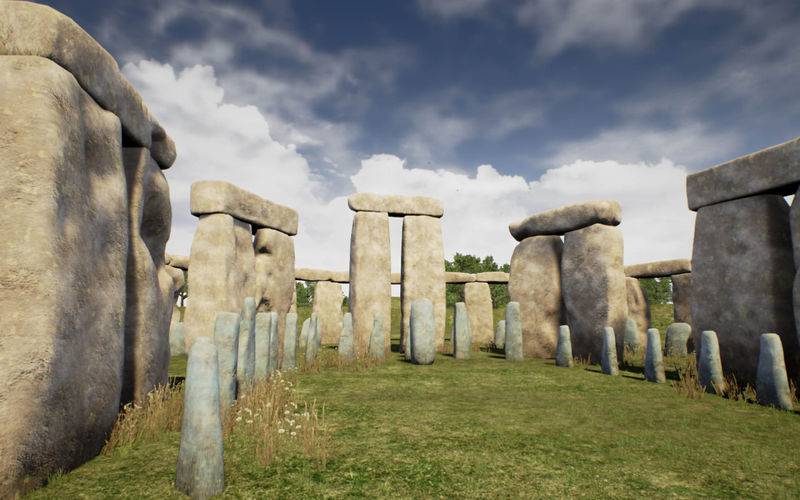点击按钮跳转至开发者官方下载地址...
EMAP Soundgate - Mac OSX Version
Created by Dr Rupert Till
Reader in Music at the University of Huddersfield
Press on the keyboard W or S for up and down, forward and backwards.
A or D for left and right.
In some areas you can use the arrow buttons.
Numbers 1 - 5 trigger sounds.
P for the Menu.
You can use an XBox Joystick as well.
The mouse or touchpad will let you look around.
The Soundgate App allows you to interactively explore a number of archaeological sites as they might have looked in the ancient past. As well as seeing what they look like, you can also hear what they sounded like. Three World Heritage Sites are virtually modelled visually and sonically, prehistoric caves in Spain; Stonehenge in England; and Paphos Theatre in Cyprus. You can trigger musical sounds that may have been heard there in the past, and hear the acoustics of the spaces.
This caves are part of the Cave of Altamira and Paleolithic Cave Art of Northern Spain World Heritage Site, El Castillo, La Garma, Tito Bustillo, Las Chimeneas and La Pasiega. Paintings range from 42,000 to 15,000 years old. The oldest are red dots. Generally red images are older than black, and dots or hand shapes are older than animal images like deer, bulls, bison, horses and goats. You will hear a sound recording that was made on site in the cave, and after that can play musical sounds by pressing buttons, and hear the acoustics of the cave. This will work better wearing headphones. The digital models that were used to create the cave simulations are built from dozens of photographs stitched together digitally.
The second site is Stonehenge, one of the most famous archaeological sites in the world. What can be seen of it today in Wiltshire in Southern England is only a ruin of the original site, with about half of the stones missing or fallen. Various phases of development of the site have been digitally rebuilt in the Soundgate so that you can experience what it might have been like to be there when it was first constructed. You can begin by exploring Stonehenge as it was more than 5000 years ago, about 3000 BC, when there was basically just a circular ditch with a bank inside. The first stone circle created at Stonehenge is featured in a second model you can select. This is from around 2900BC. About this time, a circle of Aubrey Holes was dug inside the bank, and it is now thought that bluestones, brought hundreds of miles from Wales, were placed in these holes. The third reconstruction of the site is dated 2500 BC, and at this point we start to see huge local stones called sarsens arranged in a circle with lintels on the tops. Trilithons are also added, giant pairs of stones with a third stone on top, looking almost like a doorway. The fourth and final phase is dated to about 2200 BC, with the bluestones rearranged amongst the larger Sarsen stones. This is the final stage of development of the site.
At Stonehenge you can press a button to trigger the sound of a reconstruction of an ancient bird bone flute, the Wilsford flute. This object was dug up by archaeologists nearby, and has a similar date to Stonehenge. You can also hear a wooden drum being played, as well as local songbirds and crows.
The third site you can select in the menu is another world heritage site, Paphos Theatre in Cyprus. The version modelled here is Roman, dated from between 300 BC and 500 AD. You can trigger the sound of two Roman musical instruments with buttons, the double pipe (also known as the tibia), and the lituus. The Lituus is a long bronze tube with a curved bell at the end, and sounds a little like a trumpet.
More information:
https://songsofthecaves.wordpress.com/multimedia/soundgate-app/
https://soundsofstonehenge.wordpress.com
http://delphianrecords.co.uk/genre/music-archaeology/page/2/
https://musicarchaeologyrecordings.wordpress.com
http://www.emaproject.eu
http://www.musicarchaeology.org
https://www.hud.ac.uk/ourstaff/profile/index.php?staffid=432







